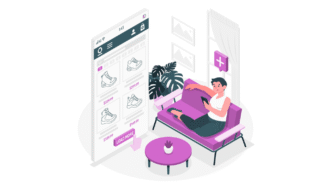LESSON OVERVIEW
This isn’t an ordinary conversation lesson about how meetings steal our time at work but rather how unhealthy our sedentary lifestyle is and what we already know about it. In this super-compact TED talk “Got a meeting? Take a walk” (just 3:30), Nilofer Merchant speaks about how sitting affects our health and what we can do about it! (No! It’s not jogging!) From the practical side, your students will have 2 listening comprehension tasks and learn new informal language.
WARM-UP
The worksheet should be definitely used with working adults as it often refers to the office life. It’s not a Business English lesson but it does focus on the professional part of the students’ life. We created this conversation lesson to raise awareness of a serious civilization problem. Additionally, it stimulates students with an informative speech which hopefully leads to a lot of discussion. The first two activities are warm-up speaking tasks which may take a bit of the lesson time, however, I let my students talk here extensively.
LISTENING COMPREHENSION
Instead of traditionally doing some vocabulary tasks, students first watch the TED talk. They need to do two ‘listening for details’ tasks based on the talk3. The video is divided into two parts so you can easily let your students watch both parts twice if they don’t get it the first time. The first listening comprehension task is focused on identifying figures and what they refer to, whereas the second one is a fill-in-the-gap task, where students need to listen for one word.
INFORMAL LANGUAGE – USING IN PRACTICE
The next task is about informal/slang language which is later used in the discussion points (exercise 6) to reinforce new vocabulary and give students an opportunity to use them in speech.
If you are interested more on this topic or want to add some extra information then just check Nilofer’s reading list with links here or use this great fact-based infographic about the harmful effects of sitting. You may find there some interesting data and improve this lesson!
WORKSHEETS
Subscribe to unlock these and many other Standalone lesson with the Premium plan
Subscribe














Here is a quizlet with some of the exercises and vocab from this lesson! https://quizlet.com/_8ao0l6?x=1qqt&i=nyde1
Audra, thanks for sharing!
I have some doubts about one exercise – can ‘tush’ actually refer to ‘belly’? I’ve always thought it means bottocks, so I’m pretty confused.
Obviously, it doesn’t but that’s what the task is all about. In that task, students are supposed to choose what the word or phrase means from the two options given.
The trouble with this is it’s really American English – quite a lot of it isn’t relevant to the UK.
Well, it’s still fun 🙂 IMHO, even if you teach BrE, you should also include some AmE language because all in all your students are quite likely to meet both people who use BrE and AmE.
This is a great lesson!
Happy to hear you liked it, Julia!
Thank you 😊
this is a lesson from KEYNOTE SB
That’s not true! The only thing that’s the same is the video we both used, which is a quite popular TED Talk (with over 4 million views). If you look at the activities none of them are the same! We have not copied or used any of the activities in Keynote for inspiration. I mean I created this lesson 8 years ago and just saw Keynote lesson five minutes ago 🙂
Great, fun lesson!